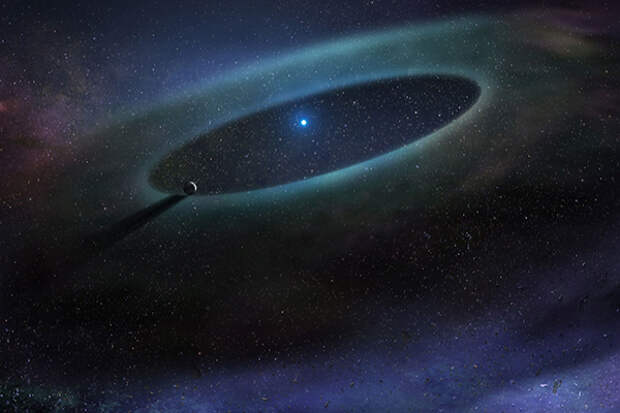
Full Text:
Astronomers using the Atacama Large Millimeter/submillimeter Array (ALMA) surveyed dozens of young stars -- some sun-like and others approximately double that size -- and discovered that the larger variety have surprisingly rich reservoirs of carbon monoxide gas in their debris disks. In contrast, the lower-mass, sun-like stars have debris disks that are virtually gas-free.
This finding runs counter to astronomers’ expectations, which hold that stronger radiation from larger stars should strip away gas from their debris disks faster than the comparatively mild radiation from smaller stars. It may also offer new insights into the timeline for giant planet formation around young stars.Image credit: NRAO/AUI/NSF; D. Berry / SkyWorks
